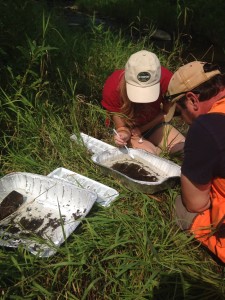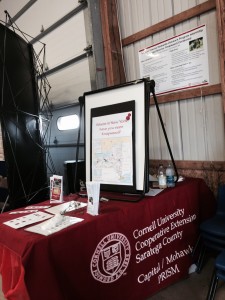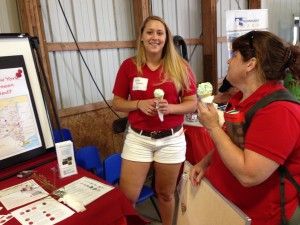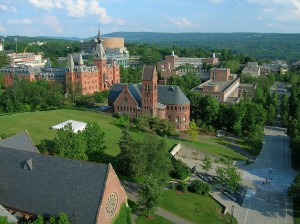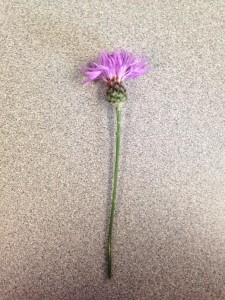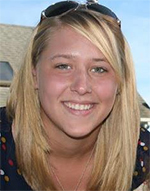It is a bittersweet feeling, to be ending my internship today. I am looking forward to two relaxing weeks with my family before diving back into my schoolwork, but I was just starting to get settled into the office and getting to know the people I surround myself with daily.
John and I were tricked into a educational last day to get us out of the office for a while with the storm water management department. We headed out to one of their sites to learn about the citizen science project they are very involved in called WAVE – Water Assessment by Volunteer Evaluators. They took samples from the stream we visited and we all tried to sort and identify the different water insects that were in the water. In doing so, it would give us a perspective of how healthy that stream is. There are certain insects that are desirable in streams and rivers, and some are less, and to determine the health, it is a matter of what insects are present – more desirable insects means the stream is healthy and vice versa. Blue Neils kept us out until around noon and when we returned, the office had a surprise celebration lunch the going away of myself, John, and Jamie, another intern with water health. There was a pizza lunch, and peach cobbler and ice cream to finish it off, my favorite.
But, as I promised in my last post, I was going to talk about my experience at Empire Farm Days in Seneca Falls. It was the first time I had been to this, and I will admit it was very cool. As the daughter of parents in the greenhouse production business, I had been to expo’s for the horticulture industry, and that is what I equate it to. Rows and rows of farm machinery, products, gadgets, and just about anything else you can think of that would be used on a farm. Christina and I managed to fit ourselves in next to some other vendors in the Cornell Building where there is everything Cornell and Cornell Cooperative Extension. We had a great little set up with some of the brochures I made, handouts on ladybugs, and an overview of our project on a poster, and a poster of New York Sate for folks to interact with and show us where they have seen Knapweed. It was great to see some familiar faces whether out walking around, or talking to folks at our booth. It was also nice to see some friends of ours that also did CCE internships in other fields and learn about their experiences.

Interactive map Christina and I used for people to show us where they saw knapweed across the state.
I am surprised that our booth generated as much traffic and interest as it did. Saratoga County, from what I noticed, had very little knapweed on the farms I visited. However, as I drove up the lake with Christina daily, from Ithaca to Seneca Falls, I could see that it was much more of a problem in Central New York that it was in the Eastern part of the state. The interactive map we created even showed that. Also, on our morning drive, we would pull to the side of the road where we would see it driving by (just about anywhere) and pick some so that the people could see what it was as they came over to out booth. With that I noticed that much of what we were finding was Meadow Knapweed and not the Spotted, which was all I found in Saratoga County.
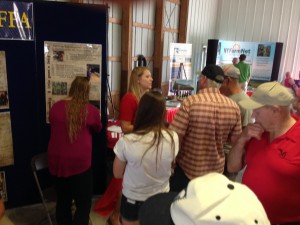 Most of the questions farmers and some homeowners asked was, is it harmful? and How do I get rid of it? As far as the harmful question goes, that was an easy one to answer because, yes, if you let it grow, you will pay for it soon enough. I learned a few more things about the weed. It is a biannual, so it goes to seed twice a year, and it can produce up to 300 seed heads on a single plant, each which contains 40-60 seed. The seeds can be transported by wind, water, animals and humans, so if it is not properly maintained, it can get everywhere. And some farmers told me of whole fields that completely taken over by the weed. Another reason it is harmful, is that its roots secrete toxins that can stunt the growth and even kill plants around it. Naturally, after people learned this, their next questions was “Well, how do I get rid of it?” I had no direct answer, but I would just recommend mowing it a few times a year to keep it from going to seed to minimize the spread.
Most of the questions farmers and some homeowners asked was, is it harmful? and How do I get rid of it? As far as the harmful question goes, that was an easy one to answer because, yes, if you let it grow, you will pay for it soon enough. I learned a few more things about the weed. It is a biannual, so it goes to seed twice a year, and it can produce up to 300 seed heads on a single plant, each which contains 40-60 seed. The seeds can be transported by wind, water, animals and humans, so if it is not properly maintained, it can get everywhere. And some farmers told me of whole fields that completely taken over by the weed. Another reason it is harmful, is that its roots secrete toxins that can stunt the growth and even kill plants around it. Naturally, after people learned this, their next questions was “Well, how do I get rid of it?” I had no direct answer, but I would just recommend mowing it a few times a year to keep it from going to seed to minimize the spread. 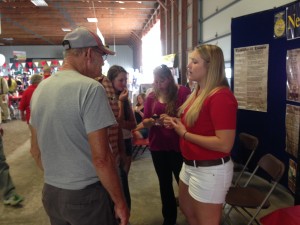 If they were a homeowner, and had a small patch of it, I recommended pulling it out and solarizing it in a plastic bag. I then let them know the reason we were there, which is that Christina and I helped with the preliminary steps to the research this summer to begin testing the insect controls that proved very effective in the Pacific Northwest. Christina was mostly set up to build relationships with farmers in Tompkins County that would be willing to lend Cornell some land of theirs to conduct their research. I mostly tried to locate different species around the state, which ended up only in Saratoga County.
If they were a homeowner, and had a small patch of it, I recommended pulling it out and solarizing it in a plastic bag. I then let them know the reason we were there, which is that Christina and I helped with the preliminary steps to the research this summer to begin testing the insect controls that proved very effective in the Pacific Northwest. Christina was mostly set up to build relationships with farmers in Tompkins County that would be willing to lend Cornell some land of theirs to conduct their research. I mostly tried to locate different species around the state, which ended up only in Saratoga County.

